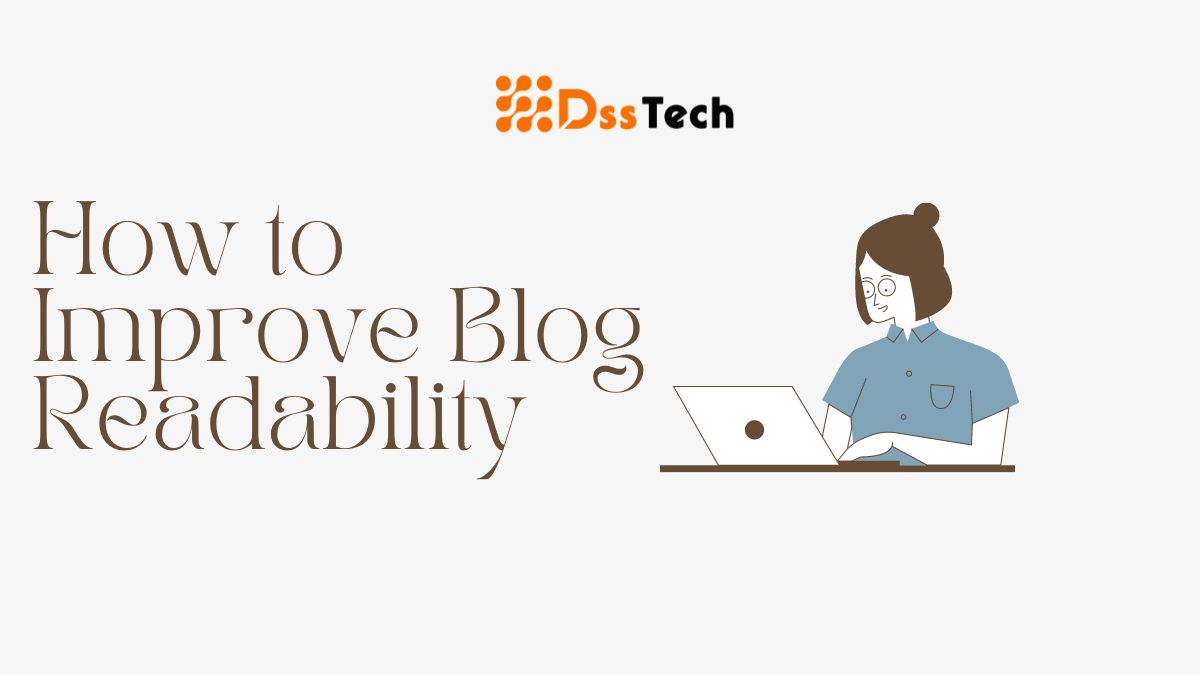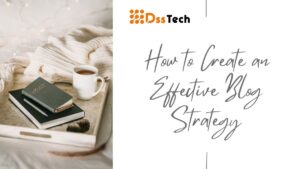Table of Contents
ToggleIntroduction: Unlocking the Power of Readability in Blogging
In the vast landscape of online content, where attention spans are fleeting and choices abound, the ability to capture and retain readers is a coveted skill. One key determinant of a blog’s success in this digital realm is often overlooked but immensely impactful — how to improve blog readability. Imagine pouring your thoughts into a well-crafted piece only to have it lost in the labyrinth of cumbersome language and poor formatting.
Readability is the bridge that connects your ideas with your audience, making the journey from introduction to conclusion a seamless and enjoyable experience. In this article, we delve into the art of enhancing blog readability, exploring practical tips and strategies that transcend mere words on a screen.
Whether you’re a seasoned blogger looking to refine your craft or a newcomer eager to make a memorable entrance, join us on this journey to unravel the secrets of crafting content that not only speaks but resonates. Let’s embark on a quest to transform your blogs into inviting oases of clarity and connection.
#1. Know Your Audience: The Foundation of Readable Content
Writing with impact begins with understanding who you’re writing for. Your audience isn’t a faceless mass; they are individuals with unique preferences, expectations, and habits. To truly connect with your readers, it’s crucial to delve into the psyche of your target demographic.
Start by defining your audience. Consider their age, interests, education level, and cultural background. What challenges do they face, and what solutions are they seeking? Tailoring your content to meet their needs lays the groundwork for improved readability.
Research tools like analytics and surveys can provide valuable insights into your audience’s behavior. Track which topics resonate, which formats they prefer, and even the devices they use to access your blog. Armed with this information, you can adjust your writing style, tone, and content structure to match the preferences of those you aim to engage.
Remember, the key is not to write for everyone but to write for the specific group that aligns with your blog’s purpose. In the pursuit of readability, understanding your audience becomes the compass guiding your content creation journey. So, let’s embark on a quest to know our readers, anticipate their needs, and deliver content that speaks directly to them.
#2. How to Improve Blog Readability: Crafting a Path to Clarity with Clear and Concise Language
In the realm of effective communication, simplicity is the linchpin. When it comes to blog writing, the adage “less is more” rings true. Clear and concise language not only facilitates understanding but also engages readers, inviting them to delve into your content without the impediment of unnecessary complexity.
To achieve clarity, begin by avoiding unnecessary jargon and technical language. Aim for a writing style that communicates your ideas with precision, catering to a broad audience. Consider breaking down complex concepts into digestible bits, ensuring that even those unfamiliar with your topic can follow along effortlessly.
Eliminate redundancies and trim excess words. Each sentence ought to add significant value to your story. Be ruthless in your editing; if a word or phrase doesn’t add value, let it go. This not only streamlines your content but also respects your readers’ time and attention.
Additionally, pay attention to sentence structure. Opt for straightforward and grammatically correct sentences. Shorter sentences can pack a punch, especially when conveying critical points. Remember, your goal is not to impress with verbosity but to communicate effectively.
In this section, we explore the art of wielding clear and concise language as a powerful tool for reader engagement. Join us as we navigate the nuances of simplicity, creating a pathway for your audience to effortlessly traverse your well-crafted content.
#3. Organize Content with Headings and Subheadings: Navigating the Blog Landscape
In the vast expanse of the internet, where information floods our screens, the role of headings and subheadings cannot be overstated. They are the signposts that guide readers through the intricate terrain of your blog, offering a roadmap for seamless navigation and comprehension.
Begin by recognizing headings as the skeletal structure of your content. They provide a skeletal framework, breaking down your blog into distinct sections and creating a visual hierarchy. This not only enhances readability but also allows readers to quickly grasp the main points of your piece.
Subheadings, the unsung heroes of blog organization, offer a deeper level of structure. They allow you to delve into specific details within each section, maintaining a flow that keeps readers engaged. Think of them as stepping stones, aiding your audience in smoothly traversing the thematic landscape of your content.
But it’s not just about aesthetics; there’s a psychological aspect at play. Readers often scan content before committing to a full read. Engaging headings and subheadings act as beacons, capturing attention and providing a glimpse into the substance of each segment.
In this section, we unravel the art of creating effective headings and subheadings—your tools for sculpting a reader-friendly landscape. Join us as we explore the intricacies of visual hierarchy and discover how, with a well-organized structure, your blog can become an inviting journey rather than a daunting expedition.
#4. Utilize Short Paragraphs and Sentences: Embracing Brevity for Impact
In the fast-paced digital age, where attention is a precious commodity, the structure of your prose can be as influential as the words themselves. Short paragraphs and sentences, like succinct brushstrokes on a canvas, create a dynamic rhythm that captivates readers and propels them through your content with ease.
Start by acknowledging the power of brevity. Short paragraphs prevent visual intimidation, making your content appear more approachable. They offer readers digestible chunks of information, facilitating comprehension and reducing the likelihood of fatigue.
Equally crucial is the use of concise sentences. Long-winded constructions can dilute the impact of your message. Opt for crisp, to-the-point sentences that maintain a steady pace. This not only aids in comprehension but also adds a punch to your writing, leaving a lasting impression.
Consider the psychological aspect as well. Shorter paragraphs and sentences invite readers to progress through your content effortlessly. The visual breaks create a sense of accomplishment, encouraging readers to continue their journey through your thoughts.
In this section, we unravel the art of embracing brevity for maximum impact. Join us as we explore the symbiotic relationship between short paragraphs, concise sentences, and reader engagement. Together, let’s discover how these seemingly small elements can wield immense influence in the realm of blog readability.
#5. Incorporate Bullet Points and Lists: Enhancing Readability with Visual Signposts
In the dance of words on a digital canvas, the strategic use of bullet points and lists is akin to orchestrating a visually harmonious performance. These elements not only break the monotony of text but also provide a structured rhythm that guides readers through your content, making it more accessible and memorable.
Begin by understanding the dual nature of bullet points. They act as visual signposts, highlighting key information and offering a respite from continuous prose. Whether presenting a series of steps, key takeaways, or a list of benefits, bullet points carve a clear path for readers to follow.
Lists, on the other hand, offer a more comprehensive organization of information. Numbered or bulleted, lists provide a sequential order or a hierarchy that aids understanding. They are particularly effective when presenting information that builds upon previous points, creating a logical and cohesive narrative.
Consider the psychology of readability. Readers often scan content for relevance before committing to a thorough read. Bullet points and lists serve as beacons, drawing attention to essential details and enticing readers to delve deeper.
In this section, we unravel the art of incorporating bullet points and lists—your allies in the quest for enhanced readability. Join us as we explore the dynamic interplay between visual elements and textual content, creating a symphony that captivates and guides your audience through the labyrinth of your ideas.
#6. Choose an Appropriate Font and Font Size: Typographic Harmony for Readability
In the symphony of blog design, the choice of font and its size plays a pivotal role in setting the tone and enhancing the reader’s experience. These seemingly subtle elements can significantly impact readability, either inviting readers to immerse themselves in your words or creating an unintentional barrier.
Commence by recognizing the importance of legibility. Opt for fonts that are clean, easily readable, and convey the intended tone of your content.Consider the context of your blog – a formal article may benefit from a different font than a creative piece. Find an equilibrium between expressing personality and adhering to practical considerations.
Equally vital is the selection of an appropriate font size. Small fonts strain the eyes, while excessively large ones may disrupt the flow. Aim for a size that ensures effortless reading, allowing your audience to absorb your message without squinting or feeling overwhelmed.
Consider the implications of font choice on the overall aesthetics of your blog. Consistency across your platform fosters a sense of cohesion, contributing to a polished and professional appearance.
In this section, we delve into the nuances of typographic choices, unraveling the impact of font and size on the readability of your blog. Join us as we explore the art of creating typographic harmony, where every letter contributes to a visually pleasing and reader-friendly composition.
#7. Balance Text with Visual Elements: A Symphony of Words and Images
In the realm of blog readability, the integration of visual elements is akin to infusing color into a grayscale canvas—it brings vibrancy, depth, and a heightened level of engagement. Striking the right balance between text and visuals transforms your blog into a visually appealing and reader-friendly experience.
Commence by acknowledging the power of visual elements. Images, infographics, charts, and videos can break the monotony of text, offering your audience a dynamic and multi-sensory experience. Visuals not only enhance understanding but also cater to different learning preferences, making your content more accessible.
Consider the strategic placement of visuals within your text. Align images with relevant content to reinforce key points, create interest, and guide the reader’s eye. Ensure that the size and resolution are optimized for various devices, maintaining a seamless integration that complements your written narrative.
But it’s not just about decoration—visuals contribute to the overall narrative of your blog. Choose images that resonate with your message and evoke the desired emotional response. Infographics can distill complex information into easily digestible formats, enhancing both comprehension and retention.
In this section, we explore the symbiotic relationship between text and visual elements, uncovering the art of creating a harmonious blend that captivates and informs. Join us as we navigate the visual landscape, discovering how the judicious use of images and graphics can elevate your blog from mere words on a screen to an immersive and memorable experience.
#8. Optimize Line and Paragraph Spacing: Breathing Room for Clarity
In the intricate dance of words on a digital canvas, the spacing between lines and paragraphs serves as the choreography that defines the rhythm of your narrative. Optimal line and paragraph spacing are not merely aesthetic choices; they are crucial elements in enhancing the readability of your blog.
Begin by acknowledging the significance of line spacing. Adequate space between lines prevents your text from feeling cramped, allowing readers to traverse your content with ease. It provides a visual breathing room, reducing eye strain and enhancing the overall reading experience.
Paragraph spacing, equally vital, delineates distinct thoughts and ideas. Ample space between paragraphs creates a visual pause, signaling a shift in focus and preventing a sense of textual overwhelm. This intentional spacing aids comprehension, guiding readers through the logical flow of your content.
Consider the psychological impact of spacing. Well-optimized line and paragraph spacing invite readers to immerse themselves in your words without feeling overwhelmed. It fosters a sense of clarity and coherence, contributing to a positive reading experience.
In this section, we delve into the art of optimizing line and paragraph spacing—an often overlooked yet powerful tool for enhancing readability. Join us as we explore the nuances of spacing, creating a visual cadence that transforms your blog into a seamlessly flowing narrative.
#9. Use Readable Color Schemes: Painting Your Blog with Visual Harmony
In the vibrant palette of blog design, the colors you choose are more than mere aesthetics—they are the brushstrokes that shape the visual experience for your readers. Crafting a readable color scheme involves more than personal preference; it’s about creating a harmonious blend that enhances the legibility and overall appeal of your content.
Begin by understanding the psychology of color. Different colors evoke varied emotions and reactions. Consider the mood you want to convey in your blog, and choose a color scheme that aligns with your content. Ensure there is sufficient contrast between text and background colors to guarantee readability.
Contrast is not only about color but also about brightness. Legibility is improved by using dark text on a light background or the opposite configuration. Avoid color combinations that strain the eyes, and be mindful of color blindness considerations for a more inclusive reading experience.
Consistency is key. Establish a color scheme that aligns with your brand identity and maintain this consistency across your blog. This not only contributes to a professional appearance but also aids in brand recognition.
In this section, we explore the art of choosing readable color schemes—a dynamic interplay of hues that goes beyond aesthetics, influencing the legibility and visual appeal of your blog. Join us as we uncover the nuances of color psychology and discover how the right color scheme can transform your blog into a visually inviting and reader-friendly space.
#10. Implement Mobile-Friendly Design: Adapting Your Blog for Every Screen
In an era dominated by handheld devices, the significance of a mobile-friendly design cannot be overstated. As readers increasingly access content on smartphones and tablets, ensuring that your blog adapts seamlessly to various screen sizes is essential for both accessibility and reader satisfaction.
Begin by acknowledging the prevalence of mobile browsing. A responsive design ensures that your blog automatically adjusts to different screen sizes, providing an optimal viewing experience across devices. This adaptability is not just a matter of convenience; it is a fundamental component of modern user expectations.
Consider the user interface on mobile devices. Navigation should be intuitive, and buttons should be easily tappable. Fonts and images should scale appropriately to avoid a distorted or cluttered appearance. Prioritize a clean and uncluttered layout that enhances readability on smaller screens.
Page load speed is critical for mobile users. Optimize images, reduce unnecessary elements, and streamline your code to ensure swift loading times. A seamless mobile experience not only improves user satisfaction but can also positively impact your blog’s search engine rankings.
In this section, we explore the imperative of implementing a mobile-friendly design—an essential aspect of blog readability in the mobile-centric landscape. Join us as we navigate the intricacies of responsive design, ensuring that your blog is not just a destination but an accessible and enjoyable journey on every screen.
#11. Proofread and Edit for Clarity: Polishing Your Prose to Perfection
The journey toward impeccable blog readability culminates in the meticulous process of proofreading and editing. This phase is not just a formality; it’s the final brushstroke that transforms your content from good to exceptional. By honing your words for clarity, you ensure that your message resonates with readers without the distraction of errors or confusing phrasing.
Commence by recognizing the value of a fresh perspective. After completing your initial draft, take a step back before diving into the editing process. This distance allows you to approach your writing with a renewed perspective, making it easier to spot errors and refine your expression.
Address grammatical and syntactical nuances. Correcting spelling mistakes, punctuation errors, and grammatical inconsistencies is foundational. Clarity in language is compromised when readers are distracted by avoidable mistakes. Use grammar-check tools and, if possible, seek input from a second pair of eyes.
Consider the flow and coherence of your narrative. Each paragraph should seamlessly lead to the next, forming a logical progression. Ensure that your ideas are presented in a manner that is easy to follow, building a narrative that engages readers from beginning to end.
Simplify complex sentences and replace jargon with accessible language. Aim for a conversational tone that fosters a connection with your audience. Reading your content aloud can be a helpful technique to identify awkward phrasing or convoluted sentences.
In this final leg of our journey toward enhanced blog readability, we explore the art of proofreading and editing—an indispensable process that polishes your prose to perfection. Join us as we delve into the nuances of clarity, refining your content to create a seamless and compelling reading experience.
Conclusion: Crafting a Reader-Centric Blogging Experience
As we conclude this exploration into the art of enhancing blog readability, it’s evident that the journey is as vital as the destination. Ensuring your blog is reader-friendly involves various elements, such as understanding your audience, choosing readable color schemes, optimizing spacing, and proofreading for clarity. These steps collectively contribute to the tapestry of a reader-centric blogging experience. By incorporating these strategies, you can discover how to improve blog readability and create content that resonates with your audience.
In the vast digital landscape, where attention is a prized possession, the clarity and accessibility of your content are the bridges that connect you with your audience. By implementing the strategies discussed, you not only elevate the visual appeal of your blog but also create an immersive journey for your readers.
Remember, readability is not a one-time effort; it’s a continuous commitment to refining and adapting your approach. Stay attuned to the evolving preferences of your audience, embrace new techniques, and consistently seek ways to elevate your content.
As you embark on your blogging endeavors armed with these insights, envision your blog not just as a collection of words but as a dynamic space that invites, engages, and resonates. Here’s to crafting blogs that not only speak but create a lasting impact—an impact forged in the crucible of clarity and readability. Happy blogging!





